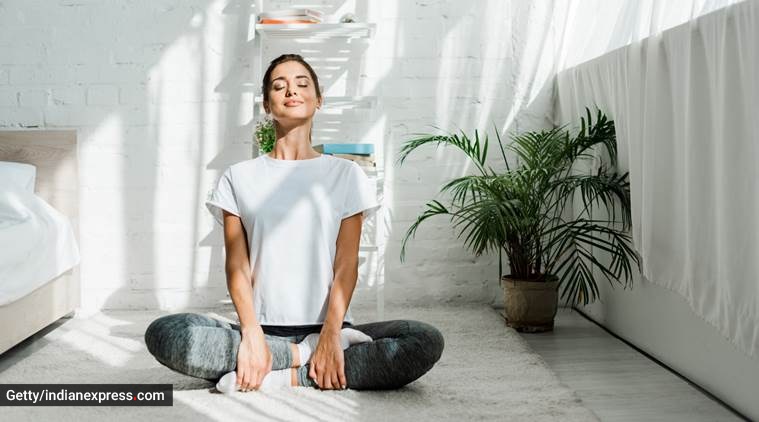Stressed? Count on this simple relaxation exercise to unwind
The technique was invented by Dr Edmund Jacobson in the 1920s to help his patients deal with anxiety.

Whether you are working from home or the office, it is always a good idea to relax after a tiring day. Your ‘me-time’ not just helps you unwind, it can also help manage anxiety, sleeplessness and allows you to plan the next day with much clarity. Speaking on the need for practicing such relaxation exercises, Dr Achal Bhagat in a Facebook live chat with indianexpress.com said that such techniques can help relax the mind and even ward off anxiety. He further revealed that one of his favourite go-to relaxation techniques is the Jacobson’s Progressive Muscle Relaxation (PMR).
Jacobson’s relaxation technique is known to be a type of therapy that helps focus on tightening and relaxing specific muscle groups in a series of sequences that are aimed at first tensing the muscles and then relaxing them so as to make one aware of their muscles and the sensations experienced throughout the exercise.
The technique was invented by Dr Edmund Jacobson in the 1920s to help his patients deal with anxiety and relax their minds. As per the technique, one muscle group is tightened first (such as clenching the jaw and then releasing it) while the rest of the body is kept relaxed. By the end of the routine, the body feels completely relaxed, devoid of any tension.
According to a 2011-study by National Center for Biotechnology Information (NCBI), PMR helps individuals to develop body awareness and educates them how to release muscle tension. To do the PMR exercise, individuals may start from the top of the body and progress to the bottom, or even vice versa. Progressing sequentially gives the individuals an easy-to-follow sense of order.
Here’s how it may help
As per a 2011-book, Complementary therapies in supportive oncology, PMR results in ‘normalising of the blood supply to the muscles, decreasing oxygen consumption, heart rate, respiration, and skeletal muscle activity and increasing skin resistance and alpha brain waves’.
Here is how to do it
Jacobson’s technique involved seven practice areas in the following series, as per a 2013-book, Myofascial Trigger Points by Christine Irnich.
*Arm exercises (for upper arm, forearm and finger muscles),
*Leg exercises (for hip flexors, buttock, thigh, lower leg, calf and toe muscles),
*Trunk exercises (for abdomen, back, rib, diaphragm, chest and shoulder muscles),
*Neck exercises (for neck muscles),
*Exercises of the eye region (for forehead, face and eye muscles),
*Visualisation exercises (perception of even weak contractions of the eye muscles),
*Exercises for the tools of speech (for muscles of mastication, floor of the mouth, face and tongue).
One common sequence is tensing and relaxing the face followed by neck, shoulders, arms, down the body to the toes. A calm, quiet, and comfortable environment is desired for optimum results.
Would you like to try it?
? The Indian Express is now on Telegram. Click here to join our channel (@indianexpress) and stay updated with the latest headlines
For all the latest Lifestyle News, download Indian Express App.
Source: Read Full Article



